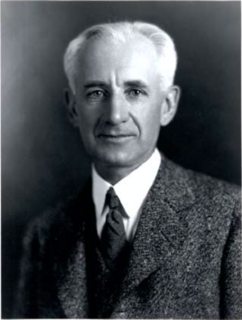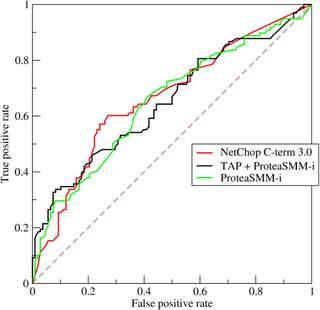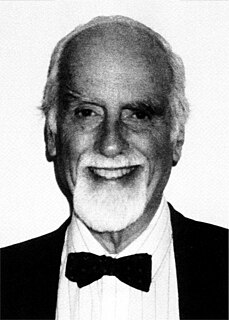Performance management (PM) is the process of ensuring that a set of activities and outputs meets an organization's goals in an effective and efficient manner. Performance management can focus on the performance of an organization, a department, an employee, or the processes in place to manage particular tasks. Performance management standards are generally organized and disseminated by senior leadership at an organization and by task owners, it can include specifying tasks and outcomes of a job, providing timely feedback and coaching, comparing employee's actual performance and behaviors with desired performance and behaviors, instituting rewards, etc. It is necessary to outline the role of each individual in the organization in terms of functions and responsibilities to ensure that performance management is successful.

Robert Mearns Yerkes was an American psychologist, ethologist, eugenicist and primatologist best known for his work in intelligence testing and in the field of comparative psychology.

A team is a group of individuals working together to achieve their goal.
Stress management is a wide spectrum of techniques and psychotherapies aimed at controlling a person's level of stress, especially chronic stress, usually for the purpose of and for the motive of improving everyday functioning. Stress produces numerous physical and mental symptoms which vary according to each individual's situational factors. These can include a decline in physical health as well as depression. The process of stress management is named as one of the keys to a happy and successful life in modern society. Life often delivers numerous demands that can be difficult to handle, but stress management provides a number of ways to manage anxiety and maintain overall well-being.
S.M.A.R.T. is a mnemonic acronym, giving criteria to guide in the setting of goals and objectives, for example in project management, employee-performance management and personal development. The letters S and M generally mean specific and measurable. Possibly the most common version has the remaining letters referring to achievable, relevant, and time-bound. However, the term's inventor had a slightly different version and the letters have meant different things to different authors, as described below. Additional letters have been added by some authors.

The Yerkes–Dodson law is an empirical relationship between pressure and performance, originally developed by psychologists Robert M. Yerkes and John Dillingham Dodson in 1908. The law dictates that performance increases with physiological or mental arousal, but only up to a point. When levels of arousal become too high, performance decreases. The process is often illustrated graphically as a bell-shaped curve which increases and then decreases with higher levels of arousal. The original paper was only referenced ten times over the next half century, yet in four of the citing articles, these findings were described as a psychological "law".

A receiver operating characteristic curve, or ROC curve, is a graphical plot that illustrates the diagnostic ability of a binary classifier system as its discrimination threshold is varied. The method was originally developed for operators of military radar receivers starting in 1941, which led to its name.

Teamwork is the collaborative effort of a group to achieve a common goal or to complete a task in the most effective and efficient way. This concept is seen within the greater framework of a team, which is a group of interdependent individuals who work together towards a common goal. The four key characteristics of a team include a shared goal, interdependence, boundedness and stability, the ability to manage their own work and internal process, and operate in a bigger social system. Basic requirements for effective teamwork are an adequate team size. The context is important, and team sizes can vary depending upon the objective. A team must include at least 2 or more members, and most teams range in size from 2 to 100. Sports teams generally have fixed sizes based upon set rules, and work teams may change in size depending upon the phase and complexity of the objective. Teams need to be able to leverage resources to be productive, and clearly defined roles within the team in order for everyone to have a clear purpose. Teamwork is present in any context where a group of people are working together to achieve a common goal. These contexts include an industrial organization, athletics, a school, and the healthcare system. In each of these settings, the level of teamwork and interdependence can vary from low, to intermediate, to high, depending on the amount of communication, interaction, and collaboration present between team members. E. g. Team work coordinates the work as early as possible

A comfort zone is a psychological state in which things feel familiar to a person and they are at ease and in control of their environment, experiencing low levels of anxiety and stress. In this zone, a steady level of performance is possible.

The forming–storming–norming–performing model of group development was first proposed by Bruce Tuckman in 1965, who said that these phases are all necessary and inevitable in order for a team to grow, face up to challenges, tackle problems, find solutions, plan work, and deliver results. As Tuckman knew these inevitable phases were critical to team growth and development, he hypothesized that along with these factors that interpersonal relationships and task activity would enhance the four-stage model that is needed to successfully navigate and create and effective group function.
Competence is the set of demonstrable characteristics and skills that enable and improve the efficiency or performance of a job. The term "competence" first appeared in an article authored by R.W. White in 1959 as a concept for performance motivation. In 1970, Craig C. Lundberg defined the concept in "Planning the Executive Development Program". The term gained traction when in 1973, David McClelland wrote a seminal paper entitled, "Testing for Competence Rather Than for Intelligence". The term was used by McClelland commissioned by the State Department, to extract characteristics common to high-performing agents of embassy, and to help them recruit and develop. It has since been popularized by Richard Boyatzis and many others, such as T.F. Gilbert (1978) who used the concept in relationship to performance improvement. Its use varies widely, which leads to considerable misunderstanding.
Eustress means beneficial stress—either psychological, physical, or biochemical/radiological (hormesis).
The following outline is provided as an overview of and topical guide to management:

Military psychology is a specialization within psychology that applies psychological science to promote the readiness of military members, organizations, and operations. Military psychologists provide support to the military in many ways, including through direct clinical care, consultation to military commanders, teaching others and supporting military training, and through research relevant to military operations and personnel. The stressors associated with military service are many to include exposure to high-risk training and combat. As such, psychologists are critical support components that assist military leaders in designing appropriate training programs, providing oversight to those programs, and assisting military members as they navigate the challenges of military training and military life in general. Most issues facing military members are not that dissimilar from those faced by their civilian counterparts. Specific examples of the issues faced by military personnel that may be somewhat distinct include posttraumatic stress disorder (PTSD) associated with combat, or guilt and family/partner difficulties accompanying extended or frequent deployments due to separation. Clinical providers in military psychology are often focused on the treatment of stress, fatigue, and other personal readiness issues.
A lean laboratory is one which is focused on processes, procedures, and infrastructure that deliver results in the most efficient way in terms of cost, speed, or both. Lean laboratory is a management and organization process derived from the concept of lean manufacturing and the Toyota Production System (TPS). The goal of a lean laboratory is to reduce resource usage and costs while improving productivity, staff morale, and laboratory-driven outcomes.

David Clarence McClelland was an American psychologist, noted for his work on motivation Need Theory. He published a number of works between the 1950s and the 1990s and developed new scoring systems for the Thematic Apperception Test (TAT) and its descendants. McClelland is credited with developing Achievement Motivation Theory, commonly referred to as "need for achievement" or n-achievement theory. A Review of General Psychology survey published in 2002, ranked McClelland as the 15th most cited psychologist of the 20th century.
The low arousal theory is a psychological theory explaining that people with attention-deficit hyperactivity disorder (ADHD) and antisocial personality disorder seek self-stimulation by excessive activity in order to transcend their state of abnormally low arousal. This low arousal results in the inability or difficulty to sustain attention on any task of waning stimulation or novelty, as well as explaining compulsive hyperactive behavior.
Team service management (TSM) is an open-source management framework that uses and integrates existing management methods and techniques to help teams deliver ever improving services. TSM is designed to be used by any and all teams within an enterprise including sales, production, administration, IT, finance and management teams.

Clutch performance in sports is the phenomenon of athletes under pressure or "in the clutch", usually in the last minute of a game, to summon strength, concentration and whatever else necessary to succeed, to perform well, and perhaps change the outcome of the game. It occurs in basketball, hockey, football, esports, and other sports but the phrase is most common in baseball. The opposite is "choking": failing to perform as needed, especially when not under pressure or favoured to win.

Coaching psychology is a field of applied psychology that applies psychological theories and concepts to the practice of coaching. Its aim is to increase performance, self-actualization, achievement and well-being in individuals, teams and organisations by utilising evidence-based methods grounded in scientific research. Coaching psychology is influenced by theories in various psychological fields, such as humanistic psychology, positive psychology, learning theory and social psychology.









